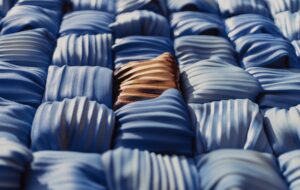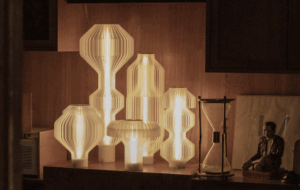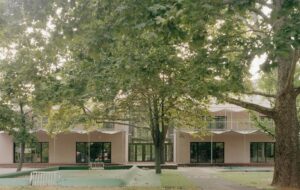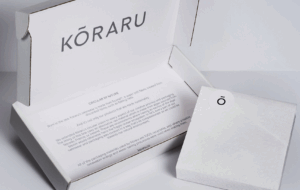


words Marcus Fairs
The first two spreads contain adverts for Prada and Gucci and one of the first essays is titled “The Evil Architects Do” – welcome to Content, Rem Koolhaas’s new book.
Seven years on from his groundbreaking tome S,M,L,XL, Koolhaas has once again redefined the architecture book with a 550-page publication that apes the format of a trashy magazine, right down to the glossy paper and flimsy cover. “It is a book camouflaged as a magazine,” says Koolhaas. “It is maybe the first architecture book that also includes advertising. Because of that we are able to sell it for a very low price of around €9 [£6.99 in the UK].”
The visuals might consist of clip-art graphics, grainy photography and rough collages but the articles see Koolhaas at his incisive best. The range of subject material is awesome: a master journalist, Koolhaas (billed in the credits as editor-in-chief) is equally at home defining the phenomenon of Junk Space, explaining why Europe’s politicians have allowed the continent to become the world’s “whipping boy” and interviewing His Excellency Bola Ahmed Tinubu, the governor of Lagos State, about his zero-tolerance approach to urbanism.
Content takes up where S,M,L,XL left off, presenting the current work of both his architecture practice, OMA, and its sister organisation, AMO, which indulges in multifarious research-based projects ranging from consulting for publishing companies and branding studies for the European Union.
Content also displays an honesty that is customarily airbrushed out of architecture books. In one article, an OMA architect is allowed to explore why the much-trumpeted collaboration between OMA and Herzog & de Mueron, to design the Astor Hotel in New York for Ian Schrager, ended in failure: “OMA is a top-heavy company, geared to Rem’s mood, permanently reinventing itself, swift and unpredictable… H&deM is the product of gradual growth – cautious, conservative and reliable in the Swiss tradition, slow-changing and competently run.”
The book reveals that Koolhaas has moved on since his “Delirious New York” days and now expresses an interest in conservation and a pronounced distaste for the America of George W Bush and the Iraq War; instead, his fascination has swung eastward towards China. Koolhaas reveals that OMA made a conscious decision not to enter the Ground Zero competition and to instead concentrate on the contest to build a giant new home for Central China TV in Beijing – a competition that OMA fortuitously won.
“We felt somehow that CCTV was a more fertile and legitimate ground for experimentation than Ground Zero would ever be,” Koolhaas says.
This tale is a convenient peg upon which to hang much of the book: the largest section is entitled Go East and catalogues projects and polemics according to geographical longitude, starting with Koolhaas’s consultancy work for Wired magazine in San Francisco, and ending with the vast 500,000sqm CCTV project in Beijing.
Along the way it sets out a number of Koolhaas’ latest positions, one being that architecture is now too slow a process to keep up with the speed at which global culture is developing; another is that the skyscraper is no longer an interesting building type – indeed, Koolhaas proclaims that his intention is now to “kill the skyscraper”.
Shaped like a giant loop, CCTV is emphatically not a skyscraper and represents a new phase of OMA’s work that promises to see the rhetoric matched by significant built projects, and Koolhaas himself making the transition from cult hero to global starchitect. “The work in S,M,L,XL was almost suicidal,” Koolhaas says. “It required so much effort that our office almost went bankrupt.”
Content is published by Taschen, www.taschen.com

















